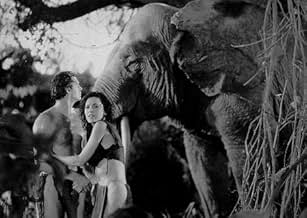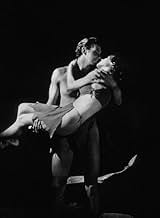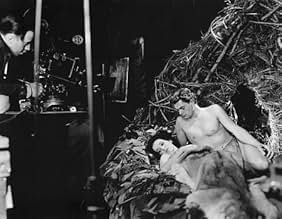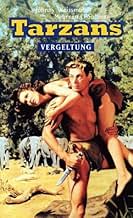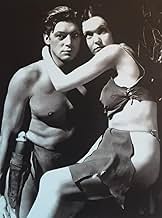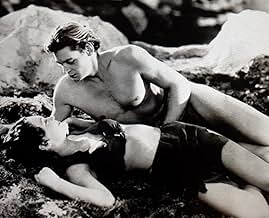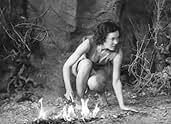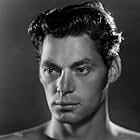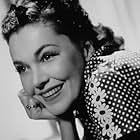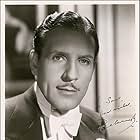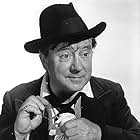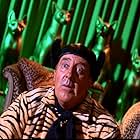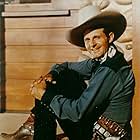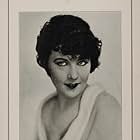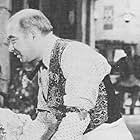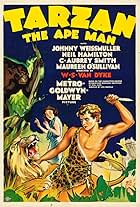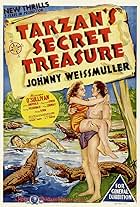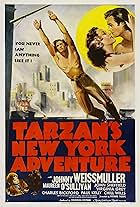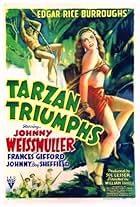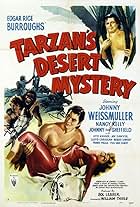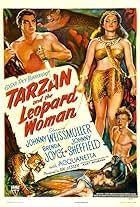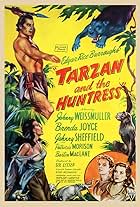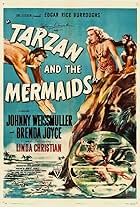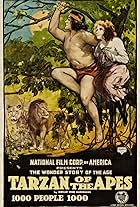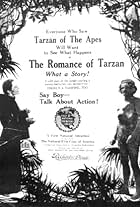IMDb RATING
7.2/10
5.7K
YOUR RATING
The idyllic life of Tarzan and Jane is challenged by men on safari who come seeking ivory, and come seeking Jane as well.The idyllic life of Tarzan and Jane is challenged by men on safari who come seeking ivory, and come seeking Jane as well.The idyllic life of Tarzan and Jane is challenged by men on safari who come seeking ivory, and come seeking Jane as well.
- Awards
- 1 win & 1 nomination
George Barrows
- Gorilla
- (uncredited)
Everett Brown
- Bearer
- (uncredited)
Ray Corrigan
- Gorilla
- (uncredited)
Yola d'Avril
- Madame Feronde
- (uncredited)
Paul Porcasi
- Monsieur Feronde
- (uncredited)
Desmond Roberts
- Henry Van Ness
- (uncredited)
William Stack
- Tom Pierce
- (uncredited)
Storyline
Did you know
- TriviaThe "African" elephants were actually Indian elephants fitted with prosthetic tusks and ears, as MGM already owned several Indian elephants and considered them easier to handle.
- GoofsAfter a bearer gets shot, Martin, Harry, and the other carriers hide behind a thicket. One bearer has two shotguns on his right shoulder. In the following shot, he appears with one shotgun on each shoulder.
- Quotes
Jane Parker: The best weapon a woman has is a man's imagination.
- Alternate versionsIn the UK, the 2002 DVD release was cut by 12 secs by the BBFC to remove shots of lions being genuinely tripped to simulate a shooting and a spear killing. The 2005 release features the extended version, but these scenes were pre-cut before submission to the classification board.
- ConnectionsEdited into Tarzan Escapes (1936)
- SoundtracksVoo-Doo Dance
(1932) (uncredited)
Music by George Richelavie
Arranged by Paul Marquardt & Fritz Stahlberg
Played during main title
Featured review
Maureen O'Sullivan turns in a stunning performance as "Jane", Tarzan's love interest. O'Sullivan's Jane set a new standard for female lead characters - strong, independent, intelligent, and not afraid to accept new challenges and face new dangers. This is remarkable given that, at the time the film was made, the typical American view was that a woman's place was in the kitchen, yet here we see an attractive, diminutive, well-bred Englishwoman living in the jungle under harsh conditions and loving every minute of it. Several times during the film, a band of explorers try to convince Jane to return to civilization and conform to society's standards, and part of the film's plot revolves around her decision as to whether or not she should leave Tarzan and the jungle life and return to America, which has led some to draw parallels between women deciding between the workplace (a man's world at the time) and the home (a woman's world at the time) and the film's world of the jungle and then-modern society.
Johnny Weismuller is cast perfectly for this role. The fact that he's an Olympic swimmer lends credibility to his role as a muscular he-man living with the apes. While some people have criticized his lack of acting ability (confusing his limited lines to be equivalent with limited acting ability), I've come to the conclusion that he's a natural actor - one who can express a range of emotion with very few words - which is exactly what Tarzan should be. As an athlete, Weismuller is used to expressing himself physically - Weismuller's Tarzan is a man of few words and limited grammar, but his eyes and body language express exactly what he's feeling and thinking. While Jane is the speaker who does, Tarzan is the doer who speaks. Jane is the civilized communicator who is not afraid to dive into a crocodile-infested river. Tarzan is the noble savage who dives into a river and only speaks to clarify what his eyes and hands are saying.
The plot is basically this: a band of explorers venture into the jungle to search for the legendary elephant graveyard to find their fortune in ivory elephant tusks. They meet Jane and befriend her, hoping that she and Tarzan will help them in their search. She convinces Tarzan to guide the hunters, although Tarzan does not feel comfortable with the venture, believing that the hunters should not be violating the sanctity of the animals' graveyards (and the unspoken law of the jungle). Indeed, at one point the hunters wound an innocent animal to track it to a grave. Tarzan decides that the hunters are evil and leaves their safari, though Jane continues on as the hunters provide her with a taste of the civilized life she left behind.
We see the conflict in Tarzan between his love for Jane and his love for the animals. We see the conflict in Jane between her love of Tarzan and her memories of civilization. The decisions that the two must make as the movie progresses have been interpreted by some as having hidden meanings and that the film producers were using the Tarzan vehicle to make statements about modern society. But I'll let you watch the film yourself and make your own decisions.
One last thing: this is the only film in the series (other than the "Tarzan" film made by John Derek and starring Bo Derek) in which Jane wears a two-piece leather costume. It's also the only installment (other than the "Tarzan" film by the Dereks) in which Jane becomes nude (but in a non-sexual scene). Trying to persuade Jane to return to civilization, the hunters give Jane a formal evening gown, which she wears to dinner and all through the night. The next morning, as she climbs out of bed still wearing it, Tarzan picks her up and carries her out onto a tree limb over the river. He dumps her into the water while holding onto the dress, so that she falls into the river naked. Tarzan makes no long soliloquy here - he's just expressed his opinion on the whole matter of civilized society quite succinctly.
See the film. It's the only "Tarzan" film worth watching (well, in addition to "Greystoke" with Christopher Lambert).
Johnny Weismuller is cast perfectly for this role. The fact that he's an Olympic swimmer lends credibility to his role as a muscular he-man living with the apes. While some people have criticized his lack of acting ability (confusing his limited lines to be equivalent with limited acting ability), I've come to the conclusion that he's a natural actor - one who can express a range of emotion with very few words - which is exactly what Tarzan should be. As an athlete, Weismuller is used to expressing himself physically - Weismuller's Tarzan is a man of few words and limited grammar, but his eyes and body language express exactly what he's feeling and thinking. While Jane is the speaker who does, Tarzan is the doer who speaks. Jane is the civilized communicator who is not afraid to dive into a crocodile-infested river. Tarzan is the noble savage who dives into a river and only speaks to clarify what his eyes and hands are saying.
The plot is basically this: a band of explorers venture into the jungle to search for the legendary elephant graveyard to find their fortune in ivory elephant tusks. They meet Jane and befriend her, hoping that she and Tarzan will help them in their search. She convinces Tarzan to guide the hunters, although Tarzan does not feel comfortable with the venture, believing that the hunters should not be violating the sanctity of the animals' graveyards (and the unspoken law of the jungle). Indeed, at one point the hunters wound an innocent animal to track it to a grave. Tarzan decides that the hunters are evil and leaves their safari, though Jane continues on as the hunters provide her with a taste of the civilized life she left behind.
We see the conflict in Tarzan between his love for Jane and his love for the animals. We see the conflict in Jane between her love of Tarzan and her memories of civilization. The decisions that the two must make as the movie progresses have been interpreted by some as having hidden meanings and that the film producers were using the Tarzan vehicle to make statements about modern society. But I'll let you watch the film yourself and make your own decisions.
One last thing: this is the only film in the series (other than the "Tarzan" film made by John Derek and starring Bo Derek) in which Jane wears a two-piece leather costume. It's also the only installment (other than the "Tarzan" film by the Dereks) in which Jane becomes nude (but in a non-sexual scene). Trying to persuade Jane to return to civilization, the hunters give Jane a formal evening gown, which she wears to dinner and all through the night. The next morning, as she climbs out of bed still wearing it, Tarzan picks her up and carries her out onto a tree limb over the river. He dumps her into the water while holding onto the dress, so that she falls into the river naked. Tarzan makes no long soliloquy here - he's just expressed his opinion on the whole matter of civilized society quite succinctly.
See the film. It's the only "Tarzan" film worth watching (well, in addition to "Greystoke" with Christopher Lambert).
- How long is Tarzan and His Mate?Powered by Alexa
Details
- Release date
- Country of origin
- Language
- Also known as
- Tarzan i njegova drugarica
- Filming locations
- Production company
- See more company credits at IMDbPro
Box office
- Budget
- $1,279,142 (estimated)
- Runtime1 hour 44 minutes
- Aspect ratio
- 1.37 : 1
Contribute to this page
Suggest an edit or add missing content



